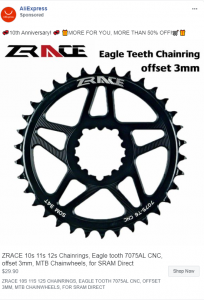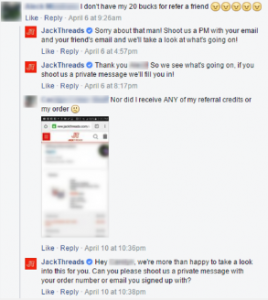In 1982, Nielsen defined Category Management as: “a process that involves managing product categories as business units and customizing them [on a store by store basis] to satisfy customer needs.” Nielsen was a little ahead of its time in that customizing product offerings on a store by store basis in the 1980’s was logistically very difficult for a manufacturer or consumer packaged goods (CPG) company. This concept today is referred to as micromarketing – and that’s where Transformational Marketing and TopRight’s 3S Model of the right Story, Strategy and Systems come in handy.
Simply put, micromarketing is a marketing strategy in which advertising efforts are focused on a small group of highly targeted consumers. It requires a company to narrowly define a particular audience by a particular characteristic, and tailor campaigns for that particular segment. With the explosion of sophisticated eCommerce tools and technologies, retailers and brand managers now have advanced ways to micro-target and promote across outlets and categories – delivering tremendous assortment and empowering consumers with choice. Of course, the applicability of this strategy spans far beyond the traditional CPG and retail industries.
A great vertical to illustrate the power of effective micromarketing and category management is the food service industry. Today in food service, there are opportunities to improve the transactional relationships between suppliers, distributors, brokers, and restaurant operators by developing a 3S category management framework that will improve the guests’ dining experience, evolve the relationships into collaborative strategic partnerships, reduce costs, and improve profit margins.
The food service industry’s need for category management is being driven by a few of the distributors and some of the larger restaurants chains. Specifically, the key drivers of this necessary change are:
- The growing need to source more strategically and locally
- SKU optimization / increasing inventory turns
- Satisfying changing consumer needs and dining occasions
- Maximizing sales and profits by both the distributor and restaurant operators
- Economic challenges and slowing industry growth
Lessons from the use of category management in retail are applicable. Retailers began to focus on category management in the early 1990s when driven by the proliferation of new SKUs, lack of partnerships and trust between retail buyers and manufacturers, minimal understanding of consumers’ shopping behavior, and lack of agreed upon performance metrics. With a focus on the shopper, retail category management has resulted in data sharing, improved inventory management, more effective supply chain, and a more collaborative partnership between suppliers and retailers.
What Does Category Management Look Like when We Apply the 3S Methodology?

Category management consists of these basic components:
Story
- Category definition: agreed upon terminology by suppliers, distributors etc.
- Category positioning: brand narrative for each category and target audience
Strategy
- Channel insights: QSR, FSR, Lodging, On-Premise etc.
- Consumer insights: consumer need states and dining occasions
- Category growth levers: strategies and tactics development
Systems
- Category management process optimization
- Category roles: within your company/brand portfolio, distributors, restaurant operators
- Performance management: category key performance indicators, scorecards
- Technology: category data, marketing automation, decision support
The Opportunity to Lead Your Respective Categories
Some suppliers that have retail category management knowledge have begun to take the lead within the food service industry and are partnering with key distributors and operators to develop the category management framework. Retail category management including shopper insights became required of all suppliers who wanted to be successful with the grocery, club, office superstores, and more. The food service industry holds great opportunity for category management because it’s so complex and distributed. Consider these operational realities:
- Frequent disconnects between restaurant operators, suppliers, and their distributors
- Route to market complexities: multiple distributors, distribution centers, and direct delivery
- Limited time menu offerings require new SKUs and discontinuance of others
- New and custom product innovation requests from the restaurant operators
- Longer shelf life requirements
- Resource Requirements: people, supply chain, manufacturing etc.
- Minimal sharing of transaction data and agreed upon KPIs.
- Pricing and margin pressures on all parties
If you are struggling to transform customer engagement across various channels, a category management approach may work for you. Learn how to apply a Transformational Marketing mindset to deliver the right Story, the right Strategy and the right Systems to move your organization to the top right corner of your category by downloading our latest ebook! Click here to access your copy of Transformational Marketing: Moving to the TopRight
Photo credit: Flickr
Business & Finance Articles on Business 2 Community(93)
Report Post






